Getting Started-What Equipment Do You Need?
If you have just bought your first large format camera taking those first steps towards making images can be a little daunting. You can’t just buy a kit and be ready to go. After you get your camera you’ll need to find a lens, film holders and all the other accessories that you need.
Despite all this, large format cameras are actually very simple. Practise a little, and they are straightforward to use. Yes, they have unfamiliar controls like rise, fall and tilt, but they are there to make your life easier, not harder. Many photographers find the idea of using a large format camera daunting because of the lack of automation. But a digital camera works in essentially the same way as a 100 year old view camera. It has a lens at one end and light sensitive material at the other. All you have to do is compose, focus and correctly expose an image by setting aperture, shutter and film speed. If you understand how your digital camera works you can directly apply your knowledge to using any film camera, no matter how old.
A large format camera is literally no more that an adjustable light tight box. There is no built in metering and nothing is battery powered. The lens contains the more familiar camera controls (shutter and aperture) while you focus by extending the bellows, rather than the lens .
Despite this, working with these big old beasts is perhaps one of the most satisfying experiences a photographer can have. When I use my camera I feel a real connection to the history of photography. Anyone can take great pride in being able to produce amazing images without any help from automation. This is a simple and uncomplicated version of photography that can still produce astounding images in the right hands
What is Large Format Photography?
Large format photography starts at 4×5 inch sheet film. As the name suggests, film comes as individual sheets, loaded into holders rather than packaged into rolls. It is a process that would be be familiar to photographers over 100 years ago, although glass plates would often take the place of film. Large format film gives you two main advantages: The large image area allows amazing quality, with slow black and white films producing resolution greater than 100mp. Also because you shoot single sheets, each sheet can be developed differently to match the lighting conditions or the contrast in the scene.
There have been lots of sizes of sheet film over the 100+ years the cameras have been available. Some are virtually consigned to history, like whole, half and quarter plate. Others are still available today like 4×5, 5×7 and 10×8. Of these 4×5 is by far the most widely available, and has the most options in terms of film type and emulsions. Colour negative, colour slide and black and white film are all available, although the choices in colour are now restricted to mainly Kodak film stocks with some Fuji transparency film.
Making your first photograph
Unlike smaller formats, there is quite a lot of equipment you need beyond a camera and some film to successfully make a large format photograph. The good news is that most experienced photographers will already own a lot of it, and things like dark cloths can be improvised. With care you can put together all the equipment you need for a relatively modest initial outlay. Many of the things you need can be bought second hand and sold for the same money you paid for them later on if you need to upgrade.
Equipment Needed
Large Format Camera
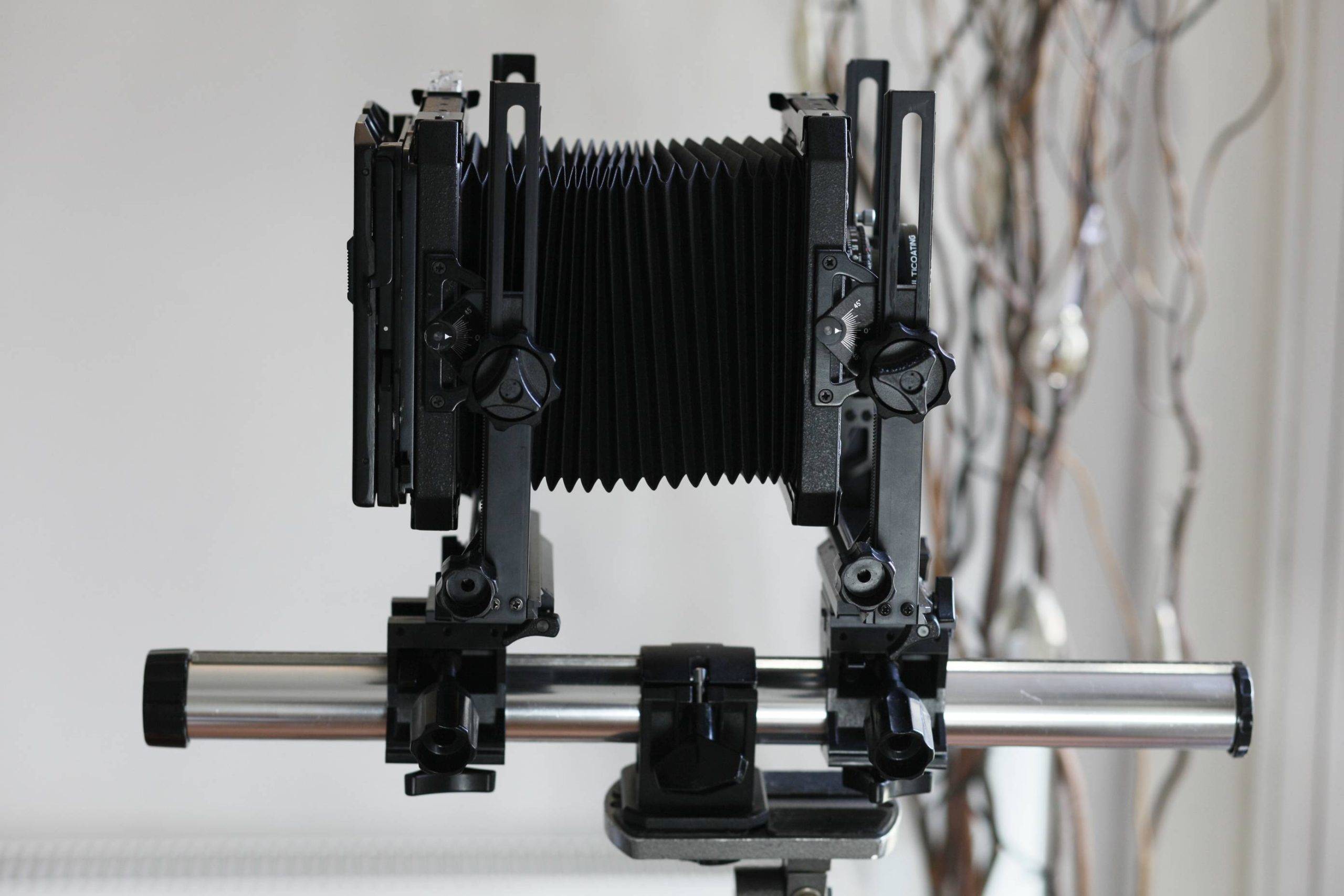
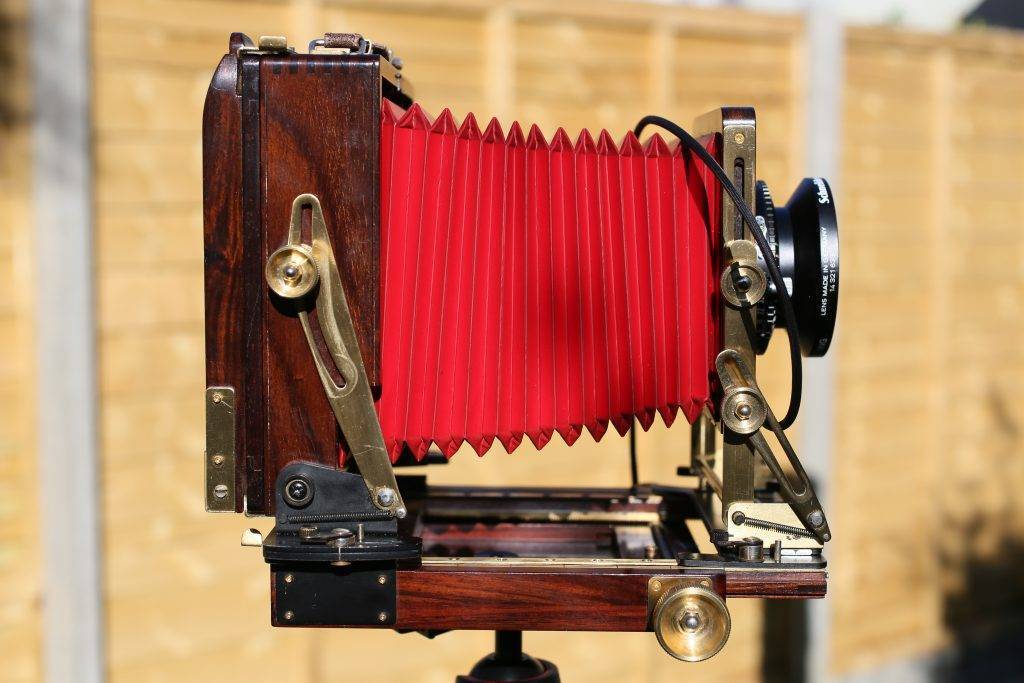
When you are starting out you should probably pick a 4×5 camera unless you have a very good reason not to. Other sizes of camera like 5×7 and 10×8 are available, but they are more expensive, the equipment can be much more difficult to find, and film supply (not to mention cost) can also be an issue. There are lots of different choices from expensive, beautifully crafted field cameras to old, heavy studio monorails you can pick up for a couple of hundred pounds. These days portability, light weight and stability are the things that tend to push up the price of large format cameras. Traditional wooden field cameras usually cost more than monorails. Like digital photography there are certain brands and models that command a premium, but often that extra cost only gives you marginal benefits, if any at all.
Monorails are often the better and more versatile cameras despite costing less on the second hand market. It is their lack of portability that keep prices low. But if you shoot in the studio or need very accurate movements don’t be tempted to pay more for a field camera that won’t suit your needs. No matter what camera you choose, check that when it is set up and all the controls are zeroed that the front and rear standards are parallel. Also make sure it locks down properly and the bellows are light tight (shining a torch inside the bellows in a darkened room is an easy way to check). Check as well the camera has enough movements to suit what you will be using it for (this is a complicated subject but there is plenty of information online).
Lens boards
One of the great advantages of large format is that lenses are pretty much interchangeable between any camera as long as your bellows will focus them. However each lens needs a lens board to mount the lens on the camera. These lens boards are a flat piece of wood or metal with a hole drilled in them to mount the lens. They tend to be specific to the brand of camera, and come in three main sizes Copal 0, Copal 1 and Copal 3.
The most common types are Linhof for field cameras and Sinar for monorails. Various makes and brands adopted them as their standard, so they are the easiest to find. Some cheaper second hand cameras use difficult to find lens boards (hence why they are cheap). If you are looking to buy one of these make sure it comes with the lens boards that you will need, or that the design of the board is simple enough that you can make your own.
Lenses
Generally speaking, almost all relatively modern lenses are excellent. As your first lens, I would recommend going for something in a modern Copal or Compur shutter from one of the main manufacturers. They are Schneider, Rodenstock, Fuji and Nikon. Your first priority should be putting together a reliable system, so that initial mistakes are easier to diagnose. A poor lens with an unreliable shutter will cause you endless grief if you are not already confident in your skills as a large format photographer. Standard lenses are around the 150mm mark, but if you are getting into large format I will assume you are experienced enough to know which type of lens you want. Just multiply the focal length of your 35mm lens by three to get its large format equivalent.
Tripod
Virtually all large format cameras need a tripod to be useable. This is not an area to scrimp on, as a wobbly tripod will cause you endless frustration with blurry shots. As potential resolution goes up, the more meticulous you have to be. Make sure the tripod you choose is strong enough and tall enough for the camera you choose. One good thing is no one wants humungous heavy tripods anymore, so you can buy them second hand quite cheaply. Carbon Fibre is the Rolls-Royce option and very light and stiff. But there have been reports of these tripods blowing over in windy conditions. The darkcloth or bellows on a large format camera can act like a sail turning your expensive wooden camera into firewood!
Light Meter
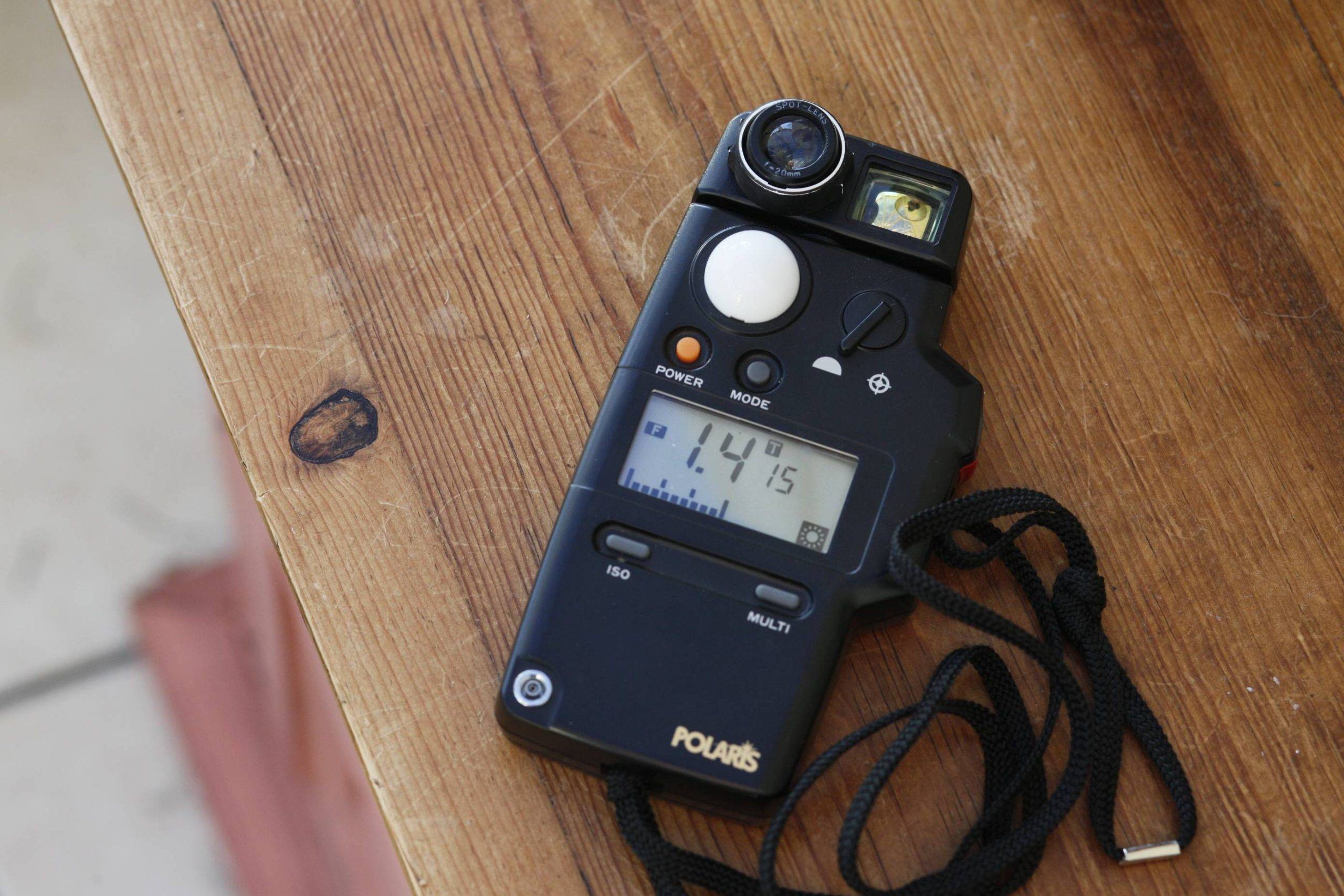
Most experienced large format photographers will use a hand held meter for establishing exposure. Either a spot meter or incident meter depending on what they like to shoot. However, you can just as easily use a DSLR and transfer the reading to your large format camera. Alternatively, get a light meter app on your smartphone. A DSLR is probably the best method when you are starting out. It allows you to visually assess your large format exposure before you expose a sheet of film. You will probably find it better to overexpose the film slightly compared to the DSLR reading. Again I will assume you have some passing familiarity with shooting with film, so I’m sure you have your own preference.
Film Holders
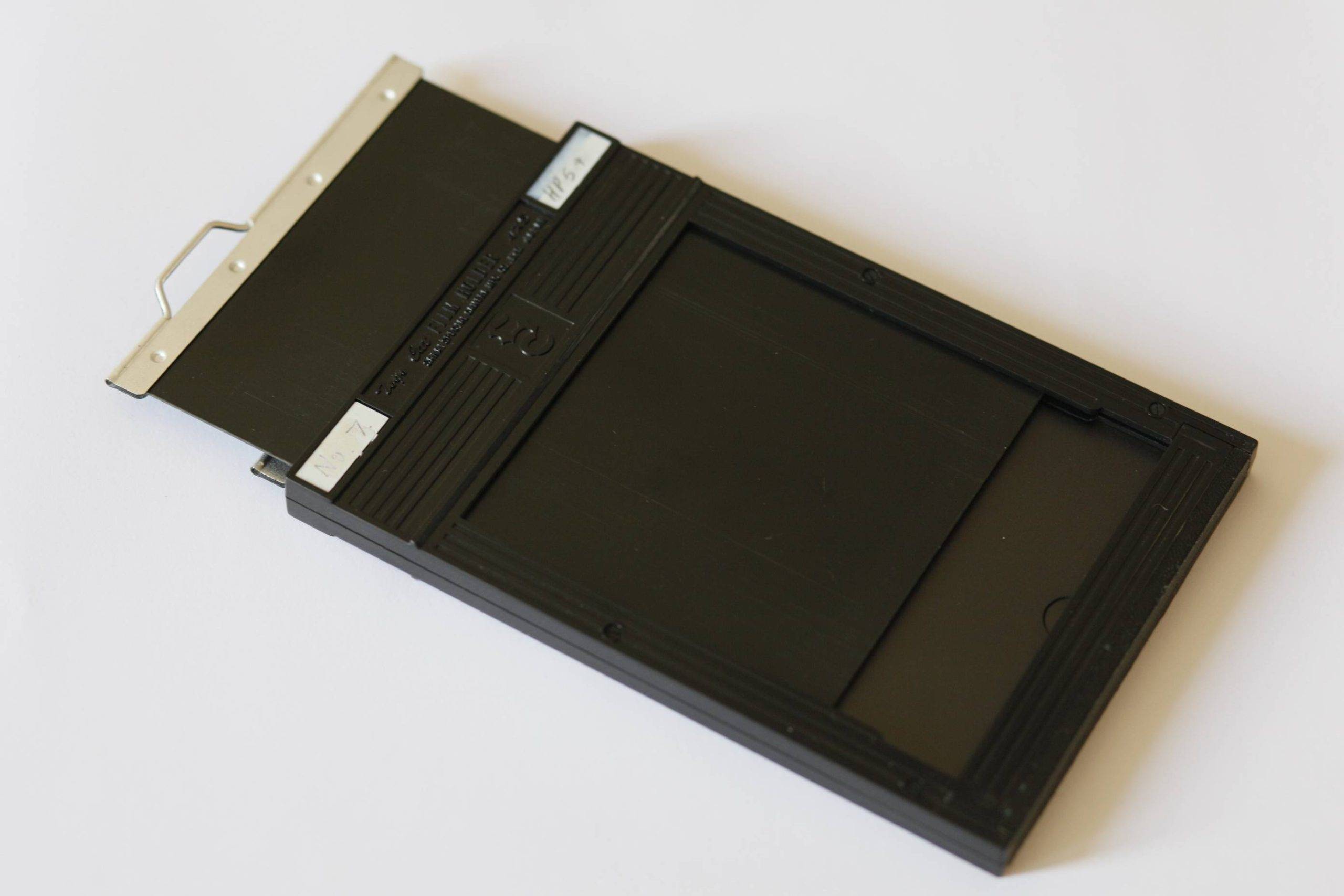
Essentially a light tight box that carries two sheets of film. You can usually pick these up second hand for about £10-20 each. Make sure they are light tight and in good condition, or risk fogged or scratched film. Damaged film is expensive and frustrating at this level of photography. If you are starting out you will find that 5-10 holders is enough. Modern holders are plastic and are pretty bullet proof. Some older holders (50 years+) are made of wood and can warp with age, so be careful of this.
Film
There is still a decent choice of film available, the only downside is colour is significantly more expensive than black and white. In the UK black and white film is about £45 for 25 sheets. Colour is £70 for 10 sheets. To start off with, I would recommend Kodak or Ilford 400iso black and white film. Ideally, one you are already familiar with. 400 speed film gives you a bit more flexibility with faster shutter speeds or higher f-stops. This makes it easier to get good results when you start
A Changing bag or Darkroom
Film is loaded into the holders in complete darkness. The easiest way to do this if you don’t have a darkroom is to purchase a pop-up dark tent. They are about 3ft cubed, which is enough space to load film relatively easily on a table in daylight.
Cable Release
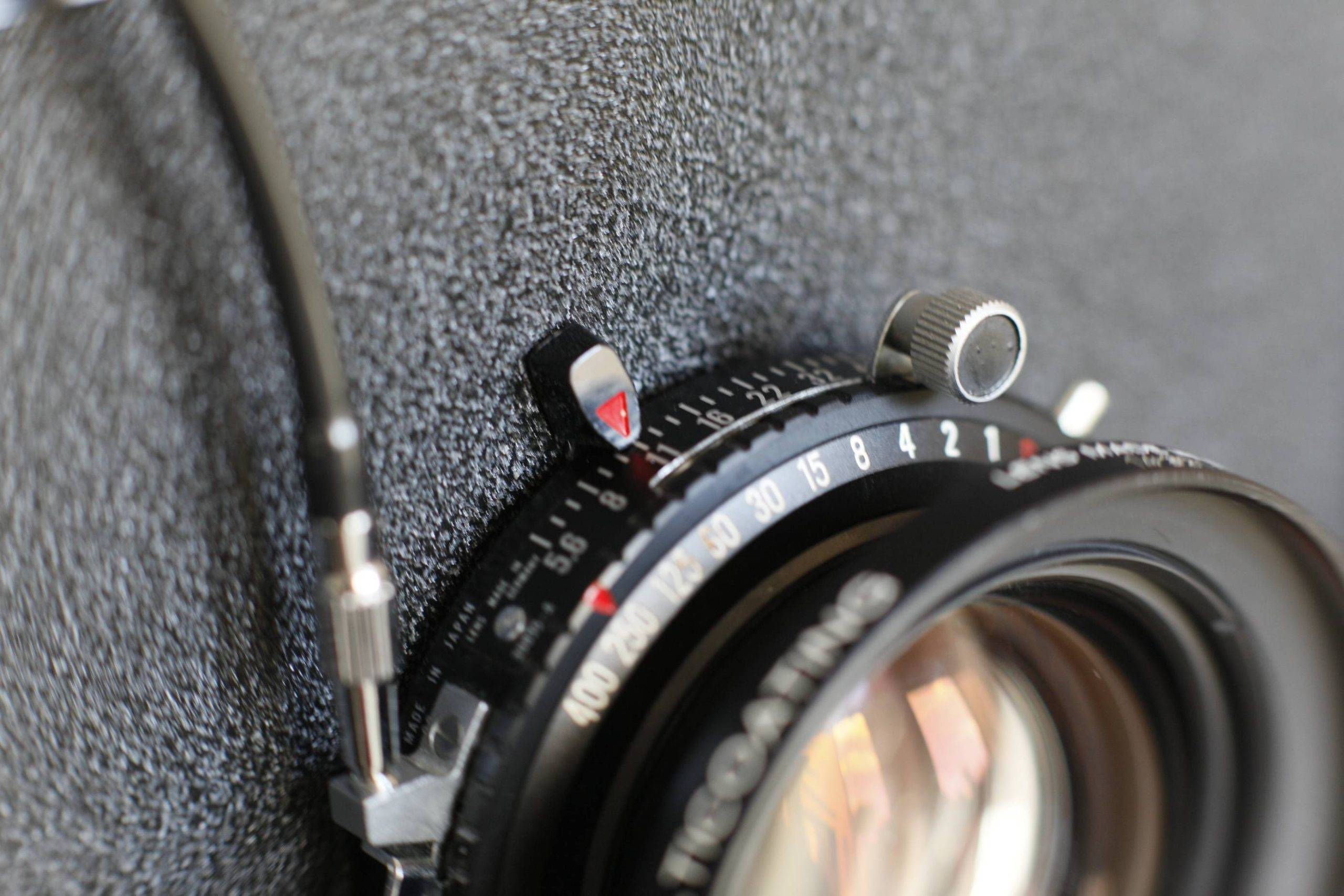
A cable that attaches to the shutter mechanism so you can trip the shutter without moving the camera. These are relatively cheap to buy. The main thing to watch for is to make sure the release is long enough. It helps avoid shake if you can stand away from the camera. You can also use your body as a shield to shelter the camera in windy conditions.
A Loupe or Magnifier
This is something you can spend anything between £5 and £200 on! Most popular when starting off are the 8x Kaiser slide loupes. They cost about £12 and will do the job.
A Dark Cloth
Without a dark cloth it is nearly impossible to see the focusing screen in bright conditions. If you don’t want to go to this expense initially you can use the double T-shirt method. Just put a black T-shirt inside a lighter colour one. Then use the neck of the shirt to fit around the focusing screen.
A Notebook
It is important to take notes when shooting with a large format camera. You don’t have metadata with every exposure, and it is a lot easier to make mistakes. Make sure you write down your exposure, film type and speed rating, and number your dark slides. If you have a light leak or other problem you will want to know where it came from!
The Wrap Up
Large format cameras probably offer the most bang per buck than any camera system. With a bit of ingenuity, you can put together a 100mp+ camera system for well under £1000. Buy carefully and you can re-sell it for what you paid for it. It can also produce images with a unique look that you can’t replicate with a digital system. On top of that, it will teach you skills that improve your work with any other camera.
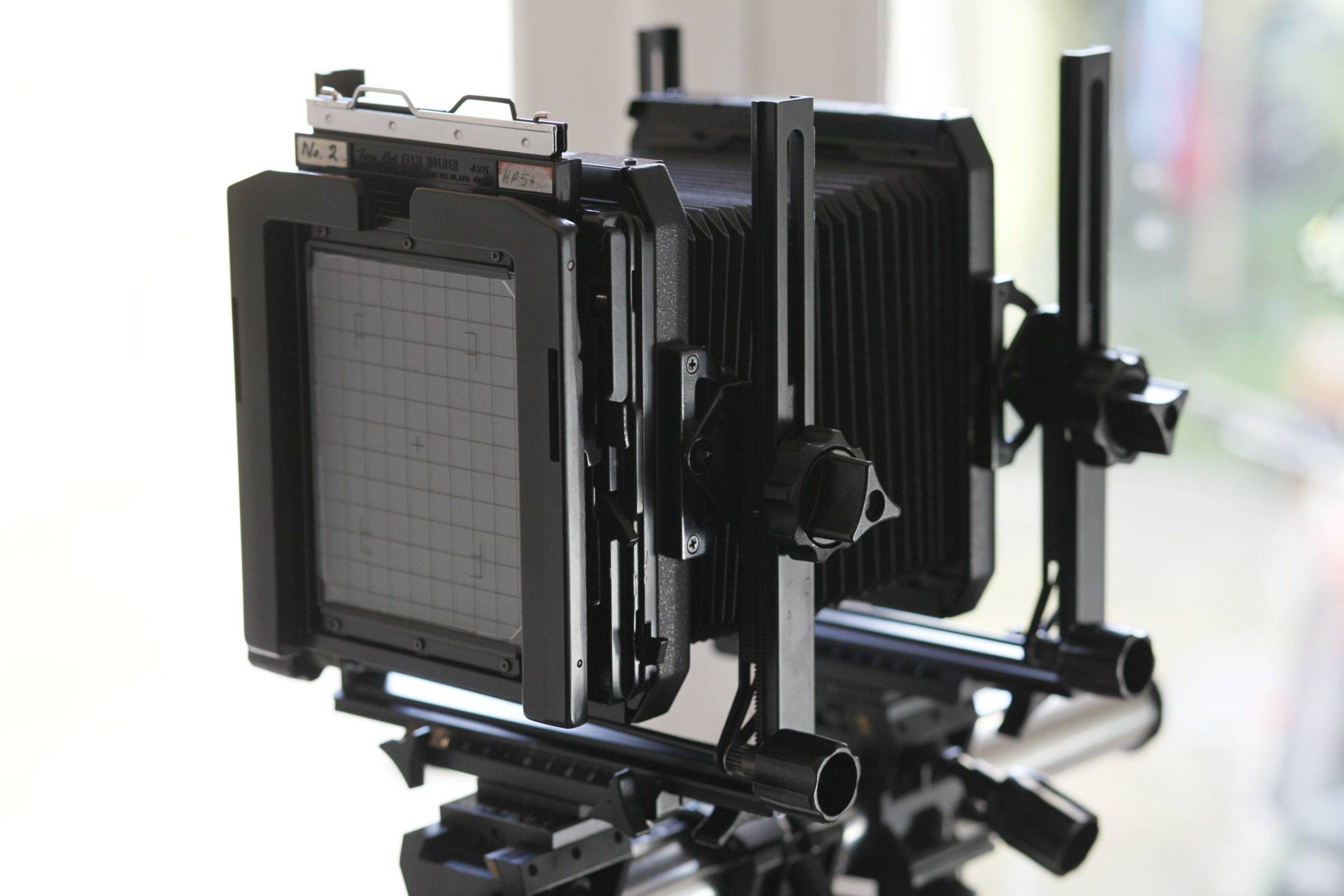
What LF camera do you shoot with?
I have a Toyo 45c, but I am looking to get something lighter so I can walk around with it for extended periods.
Pingback: Large Format – PhilipBAblog
Pingback: THE PRECIOUSNESS OF A POLAROID • THE GODDESS ATTAINABLE
Pingback: What's in my camera bag - Large Format Photography. - Tobias Key
Pingback: Large Format Article Links - Tobias Key
Pingback: Field Camera vs. Monorail. Which is better? - Tobias Key
Pingback: Shooting Portraits on 4x5 - a Beginner's Guide. Tobias Key Photography
Pingback: Choosing film for your large format camera. - Tobias Key
What happened when i process my sheet film there is no images
There are lots of things that could have happened. It could either be a camera malfunction or a developing error. The best thing is to test everything and see where the error is most likely to have come from.